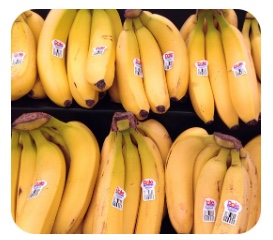 For more than a decade, the growing e-commerce industry has turned the retail world on its head. From books to beds and everything in between, online shopping offers customers convenience and value that many traditional stores can’t compete with. Still, there’s at least one area of retail that e-commerce hasn’t conquered entirely: groceries. While experts estimate that 10 percent of all shopping in the U.S. now occurs on the Internet, overall online food sales are less than half that number.
For more than a decade, the growing e-commerce industry has turned the retail world on its head. From books to beds and everything in between, online shopping offers customers convenience and value that many traditional stores can’t compete with. Still, there’s at least one area of retail that e-commerce hasn’t conquered entirely: groceries. While experts estimate that 10 percent of all shopping in the U.S. now occurs on the Internet, overall online food sales are less than half that number.
Unlike other areas of e-commerce, selling groceries online comes with a host of tricky problems. After all, it’s a lot simpler to ship a book than a banana. While a book can be placed in a package and mailed with ease, bananas cannot get cold nor can they be packed near looseleaf lettuce (due to fumes that make the produce wilt). Many other foods require special treatment as well: tomatoes should not cool to below 55 degrees or they’ll lose flavor; milk must stay upright; eggs need to stay intact; and on and on. Employees at grocery startups like Peapod and FreshDirect must keep all these requirements in mind as they carefully package food to head out the door.
Although packing each order correctly is key, the most important step in the process is delivering the groceries on time. Not only do companies need to show they can perform a service promptly, but they also must get the food to the customer before it loses freshness. “For every hour that you break that cold chain, you lose one day of shelf life,” said Peapod’s produce expert Tony Stallone. As a result, grocery delivery drivers constantly monitor traffic reports so they don’t get stuck with a car full of rapidly spoiling food. Delivery times also differ greatly between urban areas with lots of apartment complexes and suburban neighborhoods where groceries can be left on a doorstep. With so many factors to consider, it could take grocery delivery companies like Peapod years before they perfect their business models.
Questions:
- Why is the online grocery business so much more complicated than other areas of e-commerce?
- Do you think buying groceries online will someday be more popular than buying food in physical stores?
Source: Rachel Abrams, “A Street Fight Among Grocers to Deliver Your Milk, Eggs, Bananas,” The New York Times, June 24, 2017. Photo by David Mulder.
